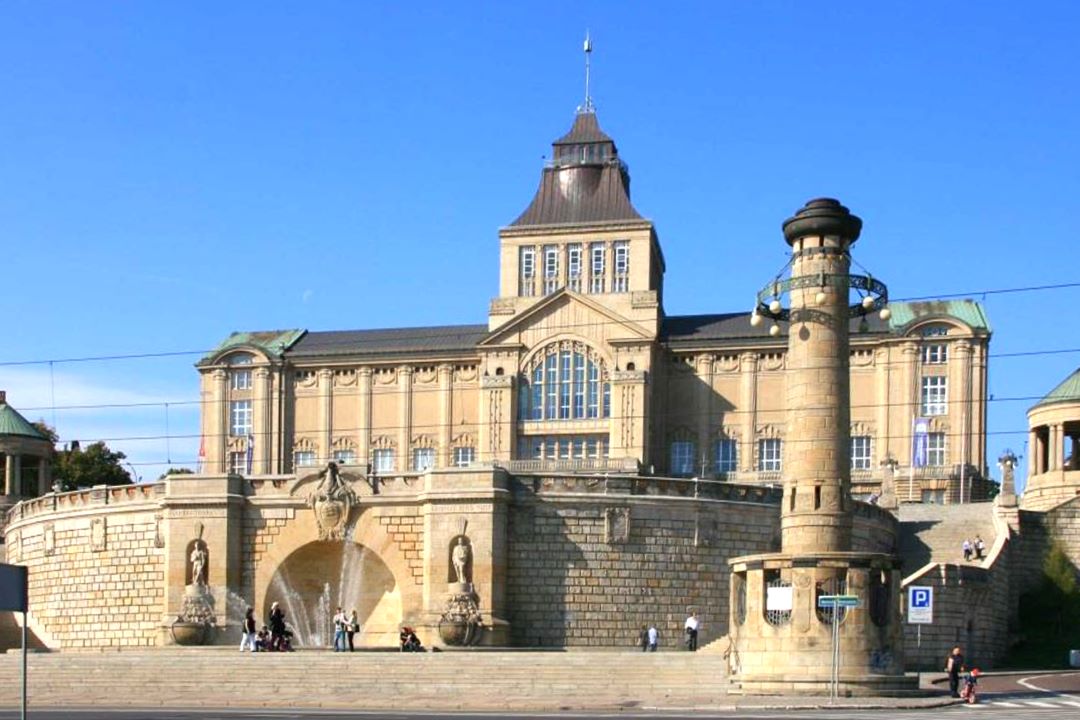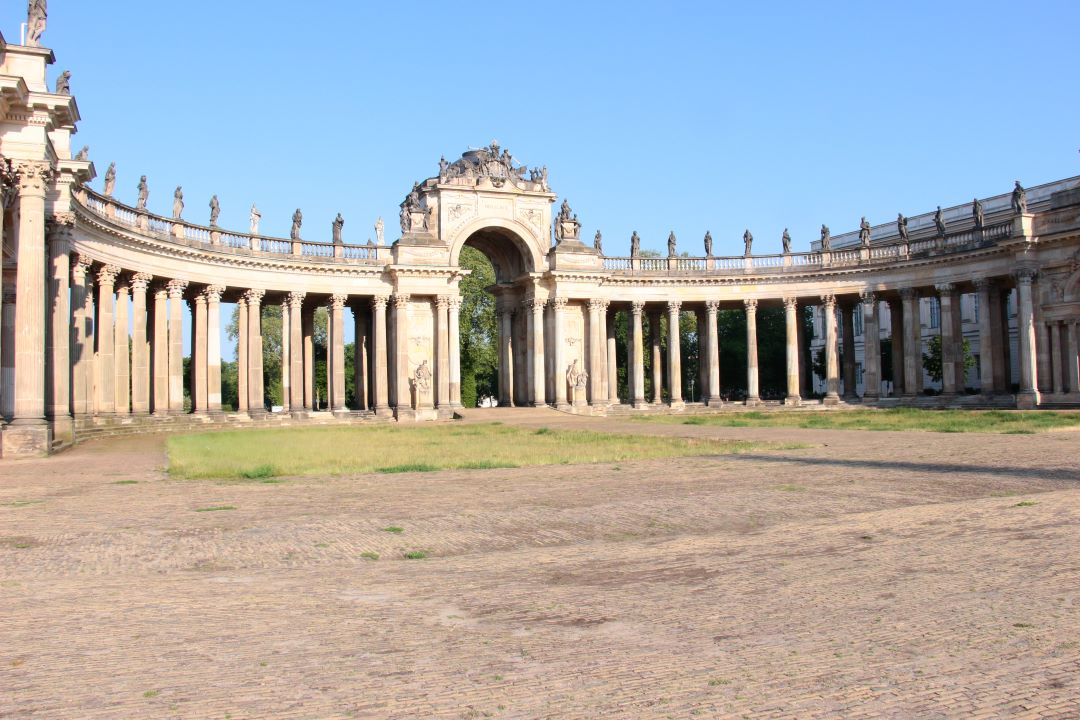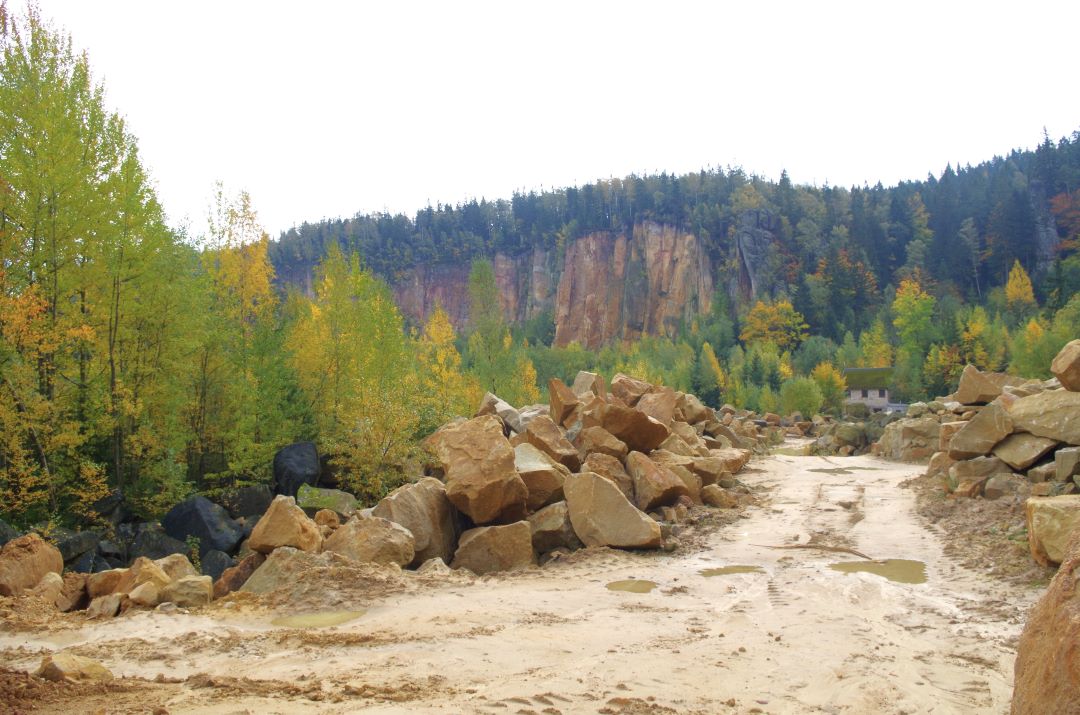
Chrobry Embankment (Wały Chrobrego), Szczecin.
Year designation
Lithology
Aesthetics
Geological settings
Mesozoic – Upper Cretaceous – Middle Turonian Sandstones of the Mid-Sudetic synclinorium
Location
Lower Silesia, Stołowe Mountains, active quarry
Chrobry Embankment (Wały Chrobrego), Szczecin.
Inconspicuous rock in the beautiful architecture of Poland, Germany and beyond.
For many centuries, the Radków sandstone was extracted exclusively by utilising the weathered blocks. Up to the middle of the 18th century the sandstone has been used regionally. After the conquest of Silesia by Prussia 1763, a large quantity of sandstone quarried and transported to Potsdam, some in very large blocks. They were used to build up the Colonnades in the Park of Sanssouci (UNESCO World Heritage site). Systematical quarrying only began at the end of the 19th century. Mining is still carried out today in Radków on steep walls up to 70 metres high by means of wall falls (until 1945 using the manual undercutting method on several levels). Due to the massive benches and the predominantly wide fissures, the dimensions of the extracted blocks are enormous. The desired raw block size is only achieved through reworking. The Radków quarry has been worked continuously since it was opened up, with only a few brief interruptions over the last 30 years. It has a total length of approx. 600 metres, making it one of the largest known sandstone quarries in Central Europe. The heyday of quarrying was in the years 1900-1914 (e.g. Berlin State Library) and 1930-1942 (e.g. Reichsbank / today Foreign Office). The quarries were able to supply large quantities of sandstone in all dimensions in a very short time. Around 4 500 m3 of sandstone from the Radków quarry was used for the State Library in Berlin between 1908 and 1904. The dimensions of some of the individual pieces are remarkable. A door lintel on the rear façade, for example, measures 7.20 metres in length. After World War II, sandstone was intensively used to rebuild the destroyed historic center of Warsaw, which was included on the UNESCO World Heritage site in 1980. In Berlin and other German cities the Radków sandstone today is widely used for restoration as well as for new buildings.
- Main publication
Jerzykiewicz, T., Wojewoda, J., 1986. The Radków and Szczeliniec sandstones: an example of giant foresets on a tectonically controlled shelf of the Bohemian Cretaceous Basin (Central Europe).- In: Knight, R.J. and McLean, J.R. (Eds.): Shelf sands and sandstones. Ca. Soc.of Petroleum Geology, Memoir II, 1-15; Calgary.
- Author(s)
Katarzyna D. Zagożdżon, Na Gobli 15, 50-421 Wrocław


